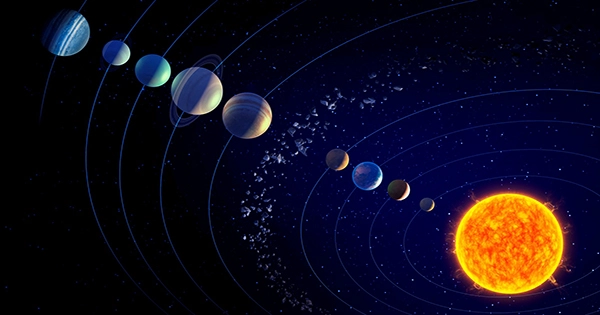Everyone understands that, in comparison to other celestial bodies, our home planet, Earth, is a light blue dot. Even our neighboring planets grow to be magnitudes larger than ourselves, and the Sun is nearly incomprehensibly vast — 1.3 million Earths would fit within our star. However, there are times when we need a fancy animation to truly comprehend something, and one Twitter user has us covered.
The real vastness of the Solar System, as well as the rotational speeds of each planet, may be comprehended in an astounding animation by Japan Aerospace Exploration Agency (JAXA) scientist James O’Donoghue. Jupiter, in particular, requires some relaxation. Did you know that Uranus spins at almost 90 degrees to its orbit? It’s a brief introduction to the universe’s size, but it’s one that must be seen to be appreciated.
And, because this launched us down a rabbit hole of size comparisons (keep your mind out of the gutter), here’s our Sun compared to Stephenson 2-18, the biggest star yet identified. And, as O’Donoghue points out, there are folks out there who believe this (below) is true.
On February 14, 1979, Voyager 1 captured its final photos before shutting down its cameras to save power. It snapped a sequence of images, pointing back at the Sun, that would constitute the first-ever “family portrait” of the Solar System. A photograph of Earth unlike any other was included in this collection, and it became known as the “Pale Blue Dot.” It displayed our earth in a manner we’d never seen it before, as a little speck caught in a ray of sunlight reflecting off the spaceship against a backdrop of empty space – lonely and defenseless, a “very small stage in a big cosmic arena,” as Carl Sagan memorably put it.
Now NASA has enhanced the shot with contemporary technology and image processing to display our little brilliant speck in better color and detail than ever before. Sagan created the title “Pale Blue Dot” when reflecting on the meaning of the image in his 1994 book of the same name. Sagan was an important part of Voyager’s final photo album. It was his proposal for Voyager to turn back and photograph Earth and her companions before its journey to the outer reaches of the Solar System brought it too far.













